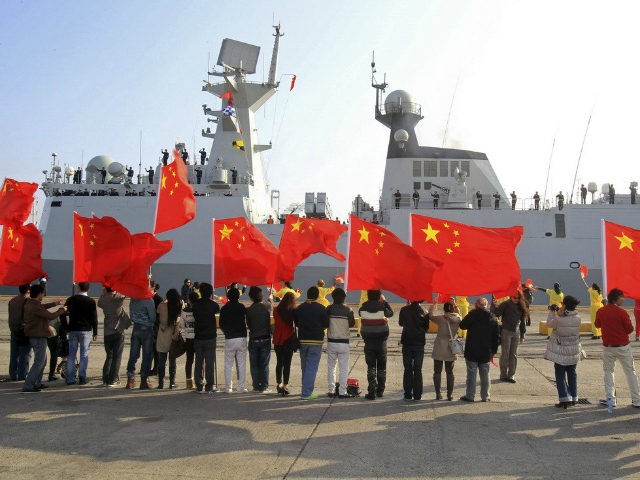Reuters reports that the Chinese navy will send five ships to participate in the Rim of the Pacific Exercise (RIMPAC), a massive international maritime drill held every two years in Hawaii.
The Chinese defense ministry said its flotilla would include two warships and a hospital ship, which would “participate in live fire, anti-piracy, search and rescue and other drills.”
Reuters notes that China participated in the last RIMPAC operation in 2014, but its participation was more limited, to “areas such as humanitarian relief and search-and-rescue operations.” Reuters does not mention that China raised hackles on that occasion by sending a surveillance ship to harvest electronic data from the other participants.
Defense Secretary Ashton Carter offered a rather tortured path in explaining why China would participate in the 2016 exercises, despite its aggression in the South China Sea.
As USNI News reports, when Carter was asked by a sailor aboard the aircraft carrier USS John C. Stennis why China would be allowed to join RIMPAC, Carter replied, “You’re right to use the word ‘allow,’ because actually we issued the invitations, and we have not taken the step of disinviting them.”
“And I’ll give you some of the logic behind that,” Carter continued, presumably taking a deep breath before plowing ahead:
Our approach to security in the region, as I indicated there, has always been to try to include everyone, so that’s our basic approach. So even as we stand strong and improve all of our systems and stand strong with our allies – and develop new partnerships with countries like India and Vietnam that we don’t have decades of experience with, like the Philippines; they’re all coming to us, in part because they’re concerned about China – but we’re still taking the approach of, everybody ought to work together here. So if the Chinese want to participate, I think it’s the right place for us to be. Come on, and instead of standing apart from everybody and isolating yourself and excluding yourself, try to be part of the system of cooperative nations that have made, as I said, the Asian miracle possible.
Carter also mentioned China’s campaign of cyber-espionage during his Q&A aboard John C. Stennis, but evidently that was not enough to get them blackballed from RIMPAC, either.
A number of lawmakers have expressed opposition to letting the Chinese participate, prominent among them Senate Armed Services Committee chairman John McCain (R-AZ).
“I would not have invited them this time because of their bad behavior,” McCain told Bloomberg News last month. “In the last number of years they had filled in 60 acres of land around these islands; in the last year they have filled in 600 acres and they are putting in a runway. I don’t think there is any doubt about their territorial ambitions.”
“I guess my question is why then should we reward China for this aggressive behavior by including them in an event meant for allies and partners?” Congressman Mark Takai (D-HI) asked Secretary of Defence Carter in March.
These skeptics point out that China is highly unlikely to improve its bad behavior out of gratitude for the RIMPAC invite, while the global impression of U.S. resolve against Beijing’s expansionism may be weakened by sending a signal that their offenses in the South China Sea are not really all that serious.
The Maritime Executive reports that other participants in the exercise will include Australia, Brazil, Brunei, Canada, Chile, Colombia, Denmark, France, Germany, India, Indonesia, Italy, Japan, Malaysia, Mexico, the Netherlands, New Zealand, Norway, China, Peru, the Republic of Korea, the Philippines, Singapore, Thailand, Tonga, and the United Kingdom. Brazil, Denmark, Germany, and Italy will be joining RIMPAC for the first time.

COMMENTS
Please let us know if you're having issues with commenting.